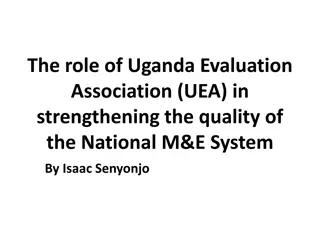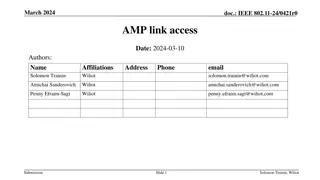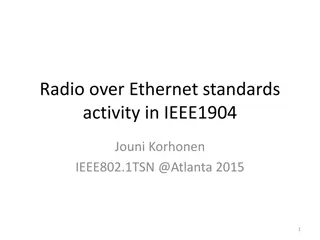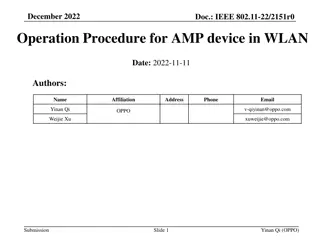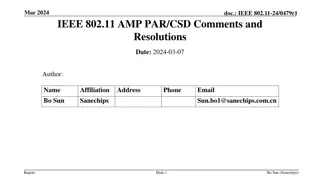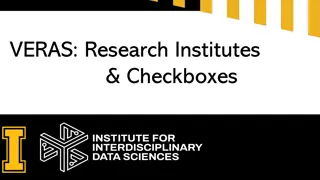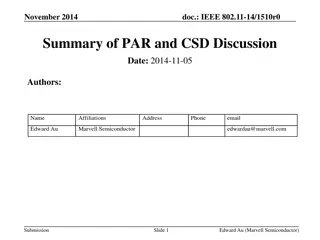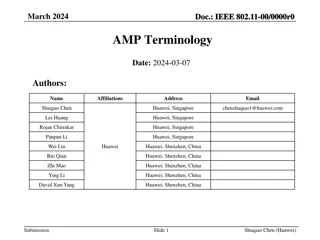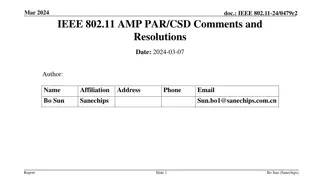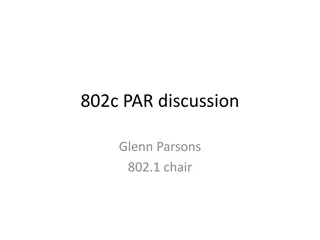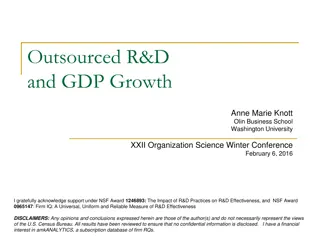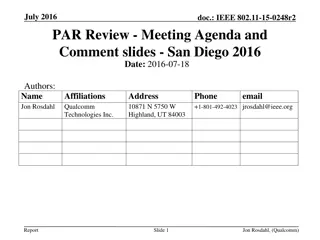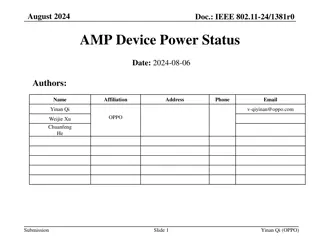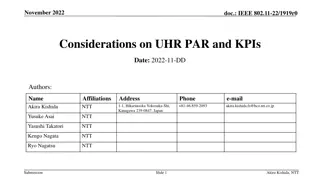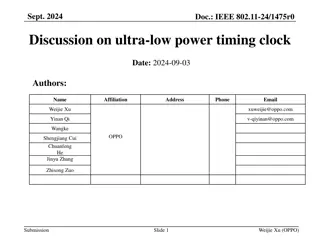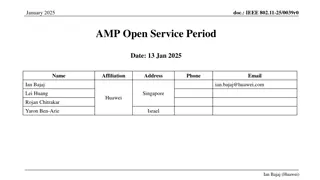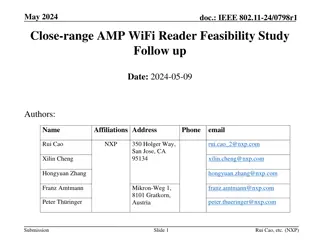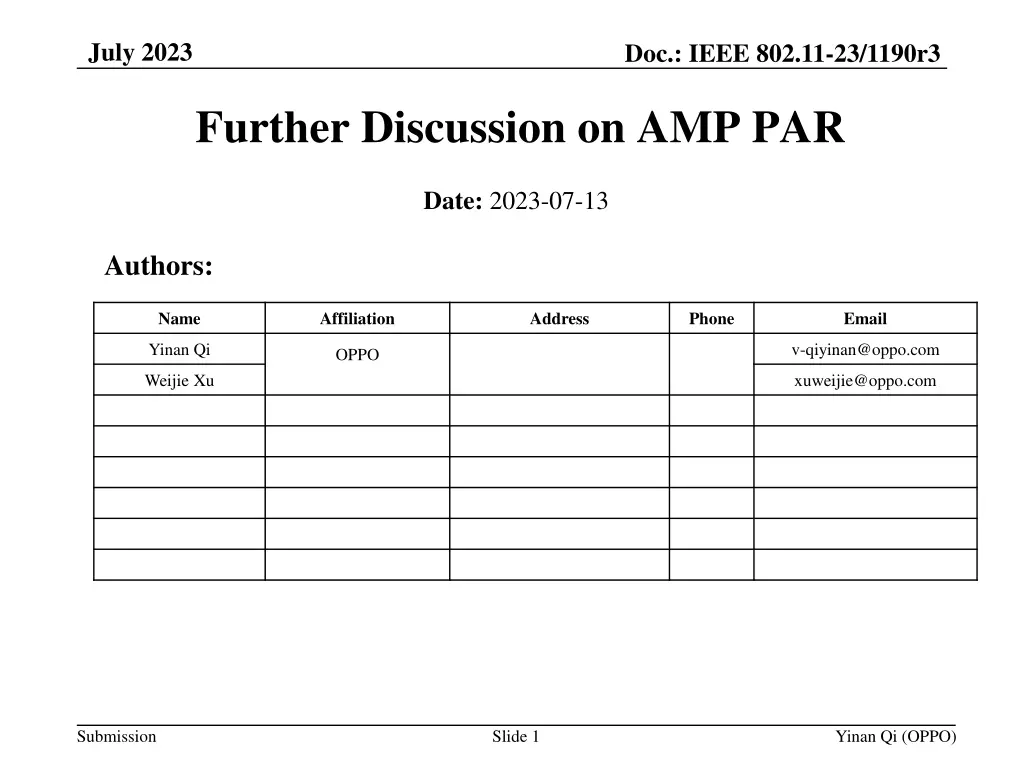
IEEE 802.11-23/1190r3 Discussion on AMP Deployment Options
Explore the discussions on deployment options for AMP devices in IEEE 802.11-23/1190r3. The document delves into RF power transfer, air interface designs, MAC optimization, and standardization issues for ultra-low power consumption. Considerations for operation frequency, backward compatibility, and co-existence are also highlighted.
Download Presentation

Please find below an Image/Link to download the presentation.
The content on the website is provided AS IS for your information and personal use only. It may not be sold, licensed, or shared on other websites without obtaining consent from the author. If you encounter any issues during the download, it is possible that the publisher has removed the file from their server.
You are allowed to download the files provided on this website for personal or commercial use, subject to the condition that they are used lawfully. All files are the property of their respective owners.
The content on the website is provided AS IS for your information and personal use only. It may not be sold, licensed, or shared on other websites without obtaining consent from the author.
E N D
Presentation Transcript
July 2023 Doc.: IEEE 802.11-23/1190r3 Further Discussion on AMP PAR Date: 2023-07-13 Authors: Name Affiliation Address Phone Email Yinan Qi v-qiyinan@oppo.com OPPO Weijie Xu xuweijie@oppo.com Submission Slide 1 Yinan Qi (OPPO)
Doc.: IEEE 802.11-23/1190r3 July 2023 Abstract Common consensus on study scope has been achieved in TIG and further discussion on PAR scope happened in the past telcos. New air-interface design optimization are needed to support ultra-low power consumption and ultra-low complexity AMP devices. and further MAC Submission Slide 2 Yinan Qi (OPPO)
July 2023 Doc.: IEEE 802.11-23/1190r3 Deployment Option 1 RF power transfer @S1G Assisting Node AMP DL air interface @S1G or AMP AP AMP STA AMP UL air interface @S1G RF power transfer @S1G Communication links Both DL and UL in S1G DL: new air-interface with WUR-like design (i.e. MC-OOK) with scaling, e.g., SCS 312.5kHz 31.25kHz, OFDM symbol duration 4us 40us, etc. UL: new air-interface with OOK/FSK/PSK RF power transfer (when RF power is used) Fixed AP or mobile AP, e.g., cell phone, as RF energy source Same S1G band as communication link Assisting Node can be optionally deployed for additional power source Slide 3 Submission Yinan Qi (OPPO)
July 2023 Doc.: IEEE 802.11-23/1190r3 Deployment Option 2 RF power transfer @S1G/2.4GHz DL communication @2.4GHz Assisting Node or AMP AP AMP STA UL communication @2.4GHz RF power transfer @S1G/2.4GHz Communication links Both DL and UL in 2.4GHz DL air-interface: WUR-like design UL air-interface: OOK/PSK/FSK or DSSS for backward compatibility RF power transfer(when RF power is used) Fixed AP or mobile AP, e.g., cell phone, as RF energy source Assisting Node can be optionally deployed for additional power source Submission Slide 4 Yinan Qi (OPPO)
July 2023 Doc.: IEEE 802.11-23/1190r3 Issues to be standardized New air-interface design for DL/UL for deployment option 1(Sub-1 GHz), e.g. WUR-like design for DL OOK/PSK/FSK for UL Enhanced air-interface for deployment option 2 (2.4GHz), e.g. WUR for DL OOK/PSK/FSK or DSSS for UL with backward combability MAC optimization for both deployment option 1/2, e.g. Routine MAC procedures including association/disassociation and authentication, etc. Channel access schemes, power management, MAC compression etc. Further consider whether to specify RF power transfer Submission Slide 5 Yinan Qi (OPPO)
July 2023 Doc.: IEEE 802.11-23/1190r3 Par Scope Consideration Operation frequency should be specified and both S1G and 2.4GHz can be supported. Other detailed requirements, e.g., data rate, channel bandwidth, can be left for TG Both communication and positioning should be supported Co-existence should be considered and backward compatibility can be considered in some special cases, e.g., UL design in deployment option 2. Submission Slide 6 Yinan Qi (OPPO)
July 2023 Doc.: IEEE 802.11-23/1190r3 Suggested Consolidated PAR This amendment defines modifications to both the IEEE 802.11 Medium Access Control layer (MAC) and Physical Layers (PHY) to enable operation of ambient powered device by defining -at least one mode of ultra-low power data communication link in sub-1GHz or 2.4 GHz -at least one mode for certain type of AMP IOT devices to connect with legacy WLAN network in 2.4GHz band -at least one mode of wireless RF power transfer in sub-1GHz or 2.4GHz -at least one mode to support positioning function This amendment shall provide coexistence with deployed devices compliant with IEEE Std 802.11 -2020 and operating in the same band. Submission Slide 7 Yinan Qi (OPPO)
July 2023 Doc.: IEEE 802.11-23/1190r3 Summary Issues including deployment options, issues to be standardized are presented. Consolidated PAR is proposed. Submission Slide 8 Yinan Qi (OPPO)

